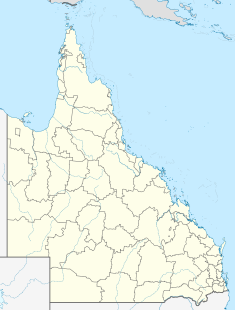Finney Isles & Co
| Finney Isles & Co Building | |
|---|---|

Former Finney Isles & Co Building, 2007
|
|
| Location | 196 Queen Street, Brisbane City, City of Brisbane, Queensland, Australia |
| Coordinates | 27°28′07″S 153°01′33″E / 27.4685°S 153.0259°ECoordinates: 27°28′07″S 153°01′33″E / 27.4685°S 153.0259°E |
| Design period | 1900 - 1914 (early 20th century) |
| Built | 1909 - 1910 |
| Architect | Claude William Chambers |
| Official name: David Jones, Finney Isles & Co | |
| Type | state heritage (built) |
| Designated | 21 October 1992 |
| Reference no. | 600142 |
| Significant period | 1909-1970 (fabric) 1909-1965 (historical) |
| Significant components | tower - water |
| Builders | James Mason |
Finney Isles & Co Building is a heritage-listed department store at 196 Queen Street, Brisbane CBD, City of Brisbane, Queensland, Australia. It was designed by Claude William Chambers and built from 1909 to 1910 by James Mason. It was also known as David Jones.
In 1992 the building was listed on the Queensland Heritage Register; at that time, the building was occupied by David Jones Limited which had taken over Finney Isles & Co in the 1960s.
This department store complex was built in stages between 1909 and 1936 for the firm of Finney Isles & Co. The firm was established by Thomas Finney and James Isles in 1864 with a draper's store in Fortitude Valley. The business quickly expanded, occupying Queen Street premises in the 1870s, then the City Exchange building in Edward & Adelaide Streets from the mid 1880s in which it sold a wide range of clothing, furniture and household items. Finney Isles, like many retailing firms, had a manufacturing section making both clothing and furniture.
New premises, which were called the "Big Block", were erected for the company in 1909-1910. Designed by C W Chambers with J Mason the contractor, the building comprised five floors on Queen Street and three floors on Adelaide Street. The use of reinforced concrete for structural purposes was one of the first occasions in Queensland. The Adelaide Street site was previously occupied by the Gaiety Theatre and part of its southern wall was incorporated in the new structure. The building featured innovative display windows on Queen Street, silky oak staircases, lifts decorated in latticed ironwork and silky oak, pneumatic tubes for exchanging cash, a roof-top water tower and a large generator providing electricity to the lights, lifts, pneumatic system and the 400 sewing machines in the workrooms.
...
Wikipedia

